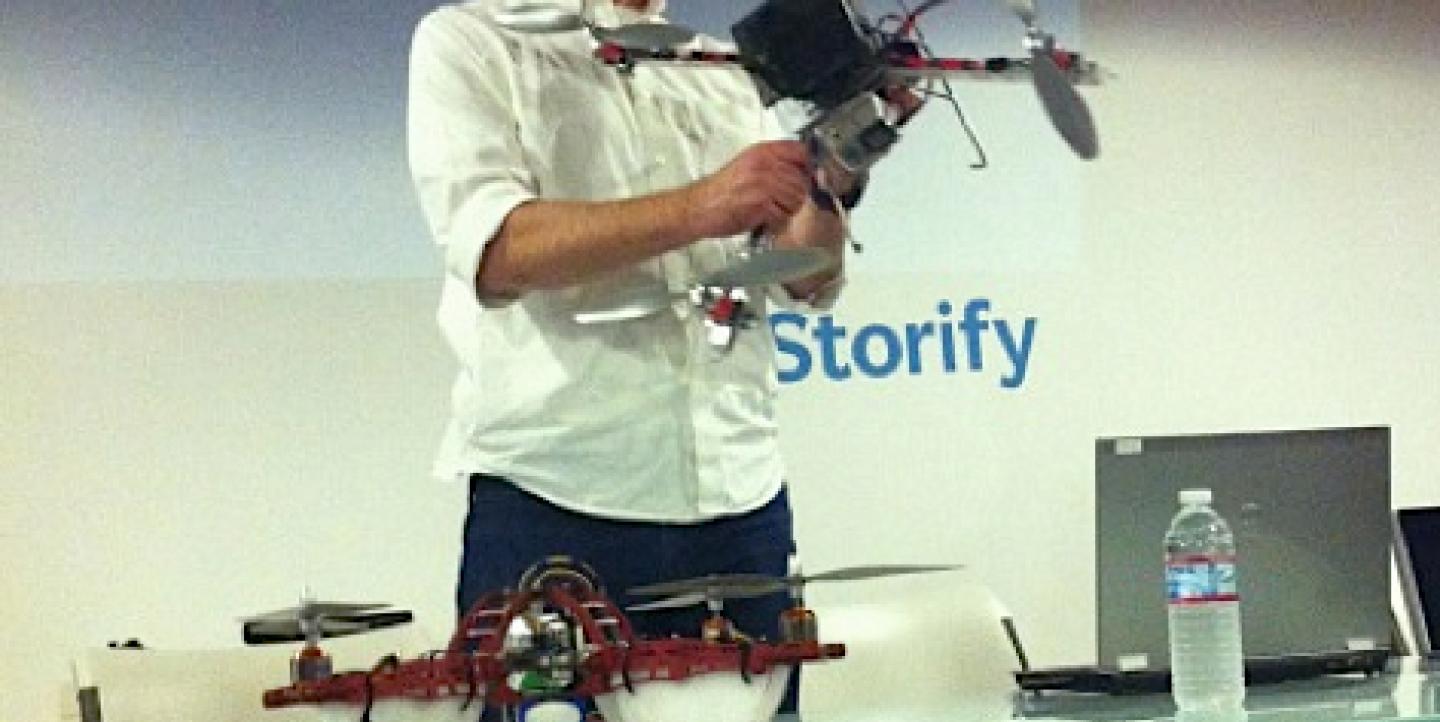Airborne newsgathering is a hot topic, but some experts believe that drone journalism may have a hard time really getting off the ground.
After spotting cameras on the wing snapping spectacular footage of protests and natural disasters, I wanted to learn more, so I enlisted Burt Herman of Hacks/Hackers and we gathered Chris Anderson of Wired, Jennifer Lynch of the EFF, Tyler Brown of the Occucopter project and Matt Waite of the Drone Journalism Lab for a recent meetup at Storify headquarters.
The upshot: the difficulties and danger of flying unmanned aerial vehicles (UAVs) may result in failure to launch a major trend soon, but journalists will still be writing about them. And there will probably a few journalists who won't mind running afoul of the law to try them out, anyway.
First, the drawbacks:
- These aren't little balsa wood airplanes, but "flying lawnmowers," that take skill to fly, frequently crash and can seriously hurt you or bystanders.
"We're open-sourcing the military-industrial complex, what could possibly go wrong?" Anderson joked. He pointed to a multicopter in the room underlining that the whirring blades are like "flying lawnmowers - you don't even want to think about that crashing on someone."
Anderson has been tinkering with UAVs since hacking his kid's LegoMindstorm and flying it in the backyard. Passionate enough about these flying gizmos to found DIY drones and startup 3D Robotics, he's got two feet firmly on the ground when it comes to using them for journalism.
- In the U.S., flying them to gather news is still illegal.
They may be cheap and fun - some basic models cost US$200-$400 - but to be legal, hobbyists must restrict them to tight distance and altitude limits and avoid built-up areas. Commercial use is still very restricted and won't be cleared for civilians until 2015.
Jennifer Lynch, an attorney for the Electronic Frontier Foundation, said that journalists, even freelancers, who dodge rules by pretending to be hobbyists will likely run afoul of the authorities.
And, as Waite of the Drone Lab pointed out, you'd get more bang for your paparazzi buck with a photographer on a long stakeout than a drone that may have 10 minutes of flying time due to limited battery power.
When pressed, Anderson said he doesn't think anyone has been arrested - yet - for shooting video or pics with a drone, citing the recent police "warning" of police to real estate agents using them.
Still, there are a few ways that journalists can ride the trend:
Think law enforcement, privacy issues. "If I had a police beat, I'd find out if they were applying for a permit," said Waite. Lynch is also spearheading the EFF's lawsuit against the FAA to release information on the 300 waivers already issued, many of them to local law enforcement agencies. Because there's no one nationwide privacy law, Lynch says, a number of interesting issues will arise as more drones patrol.
- Balloon journalism. "If you want to monitor a protest, tether a balloon," Anderson said. "That takes care of all the problems...it's safe, it's legal and if it hits someone in the head it's no big deal."
Photo: Chris Anderson with a copter at the Hacks/Hackers event, via Daniel Ucko.

